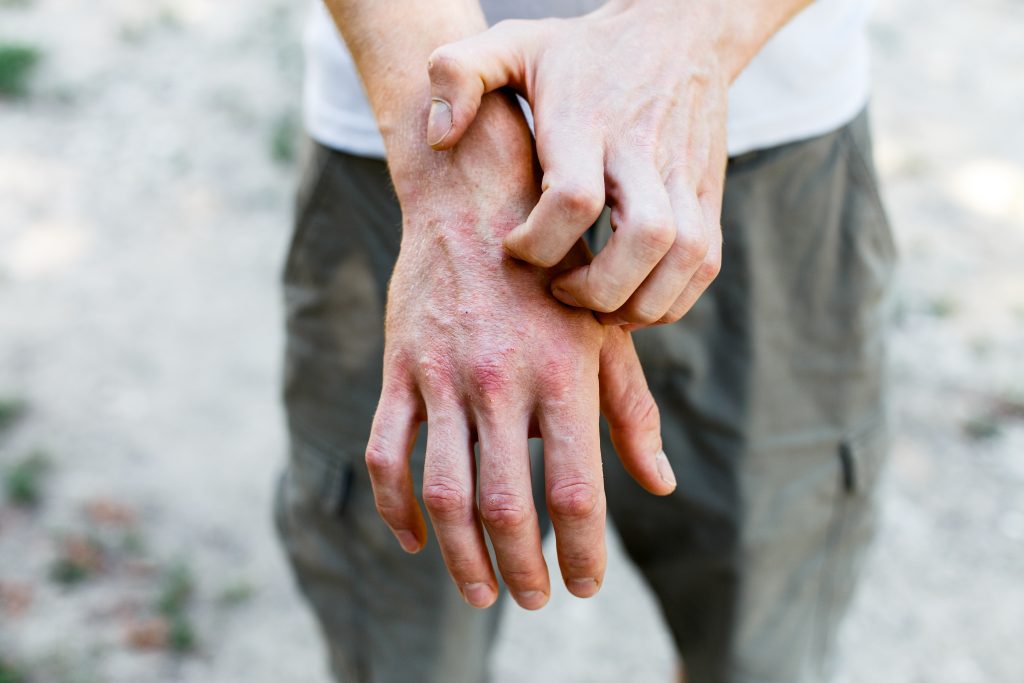It’s estimated that over 18 million Americans suffer from atopic dermatitis, a chronic inflammatory skin condition that results in dry and itchy skin. While children make up almost half of those cases, atopic dermatitis (more commonly referred to as eczema) affects patients of all ages, genders, and ethnicities.
Despite its prevalence, there’s still a lot that people don’t understand about atopic dermatitis, its symptoms, and the treatment methods available to patients who suffer from the condition. At OCR we’re committed to educating the public and raising awareness about diseases like eczema, so today we’re taking some time to walk you through everything you need to know about this common dermatology condition.
What Causes Atopic Dermatitis?
One of the most frustrating things about atopic dermatitis is that doctors still don’t know exactly what causes the condition, which means that most treatments are centered around symptom mitigation rather than addressing the root cause. While genetic factors like family history of eczema, hay fever, or asthma can increase a patients’ chances of developing atopic dermatitis, the majority of patients find that their eczema symptoms are triggered by environmental factors.
Triggers can vary patient by patient, but some of the most common eczema triggers are:
- Cosmetic products
- Clothing
- Detergents or soap
- Dust mites and other allergens
- Weather
- Food allergens
- Fragrances
- Viral infections
Symptoms of Atopic Dermatitis
Just like how triggers can vary by patient, it’s not uncommon for patients with atopic dermatitis to have a large variation in the types of symptoms they experience, as well as the severity of those symptoms. Some may find that their symptoms are quite mild and have relatively little impact on their overall quality of life, while for patients with moderate to severe eczema the symptoms may negatively impact many aspects of their life on a daily basis.
In general, the most common atopic dermatitis symptoms are:
- Dry skin
- Itchiness
- Patches of skin that may appear red or brownish gray in color
- Small, raised bumps
- Cracked or oozing skin
- Skin that appears thick or leathery
- Skin that is swollen or sensitive (often from scratching)
How To Treat Atopic Dermatitis
When it comes to treating atopic dermatitis, most available treatments center around symptom mitigation (i.e. topical creams to help soothe itching and inflammation) or lifestyle changes designed to help avoid flare ups. For patients who don’t find relief from over the counter or prescription medications, clinical trials are a great solution!
Eczema Clinical Trials In Tampa & Largo
At Olympian Clinical Research we have 3 atopic dermatitis clinical trials that we’re currently enrolling participants for – one at our Tampa office and two at our Largo office. Our Tampa study is for patients between the ages of 18-55 who suffer from moderate to severe atopic dermatitis (see qualifications and full study details here), while the Largo office is running a study for patients over the age of 18 (details here), as well as a pediatric atopic dermatitis study. These studies provide patients with access to investigational medications that could, in some cases, serve as an effective treatment for their atopic dermatitis!
The symptoms of eczema can be painful, uncomfortable, and take a serious toll on the self-confidence of patients who suffer from the condition, but the reality is that there are lots of promising treatments out there! If you, your loved one, or your child have been struggling with atopic dermatitis and are interested in gaining access to investigational eczema medication through one of our clinical trials, contact our office today to see if you qualify.

0 Comments
Leave A Comment